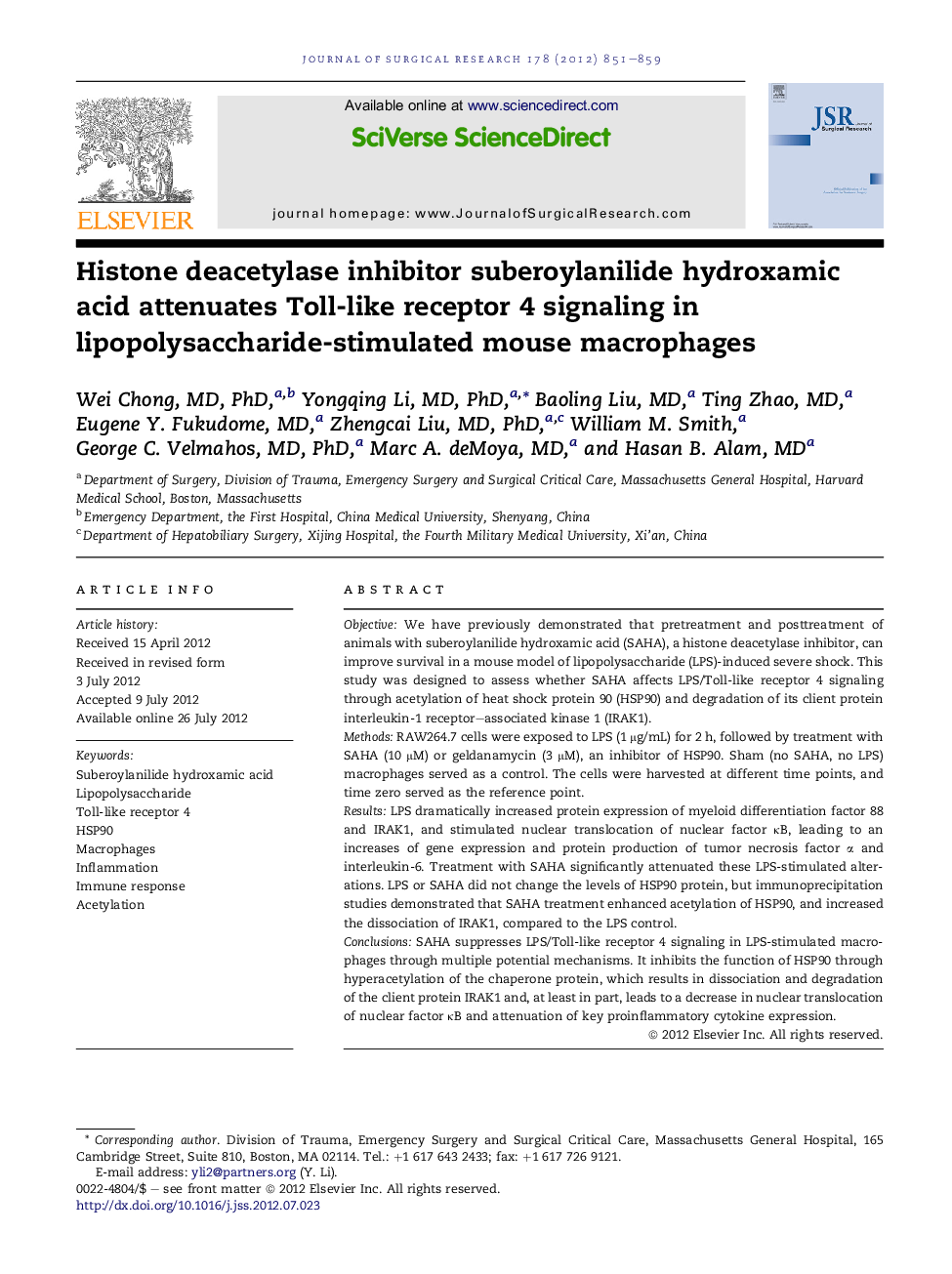| کد مقاله | کد نشریه | سال انتشار | مقاله انگلیسی | نسخه تمام متن |
|---|---|---|---|---|
| 6254564 | 1288445 | 2012 | 9 صفحه PDF | دانلود رایگان |

ObjectiveWe have previously demonstrated that pretreatment and posttreatment of animals with suberoylanilide hydroxamic acid (SAHA), a histone deacetylase inhibitor, can improve survival in a mouse model of lipopolysaccharide (LPS)-induced severe shock. This study was designed to assess whether SAHA affects LPS/Toll-like receptor 4 signaling through acetylation of heat shock protein 90 (HSP90) and degradation of its client protein interleukin-1 receptor-associated kinase 1 (IRAK1).MethodsRAW264.7 cells were exposed to LPS (1 μg/mL) for 2 h, followed by treatment with SAHA (10 μM) or geldanamycin (3 μM), an inhibitor of HSP90. Sham (no SAHA, no LPS) macrophages served as a control. The cells were harvested at different time points, and time zero served as the reference point.ResultsLPS dramatically increased protein expression of myeloid differentiation factor 88 and IRAK1, and stimulated nuclear translocation of nuclear factor κB, leading to an increases of gene expression and protein production of tumor necrosis factor α and interleukin-6. Treatment with SAHA significantly attenuated these LPS-stimulated alterations. LPS or SAHA did not change the levels of HSP90 protein, but immunoprecipitation studies demonstrated that SAHA treatment enhanced acetylation of HSP90, and increased the dissociation of IRAK1, compared to the LPS control.ConclusionsSAHA suppresses LPS/Toll-like receptor 4 signaling in LPS-stimulated macrophages through multiple potential mechanisms. It inhibits the function of HSP90 through hyperacetylation of the chaperone protein, which results in dissociation and degradation of the client protein IRAK1 and, at least in part, leads to a decrease in nuclear translocation of nuclear factor κB and attenuation of key proinflammatory cytokine expression.
Journal: Journal of Surgical Research - Volume 178, Issue 2, December 2012, Pages 851-859